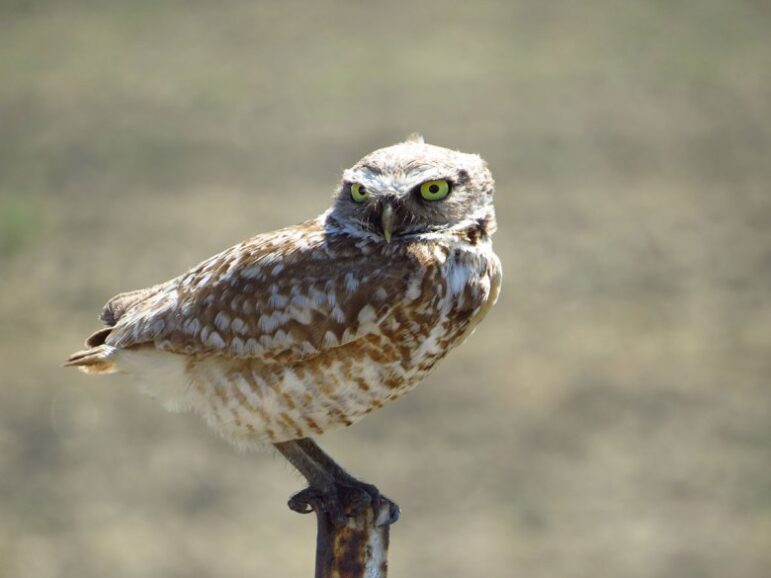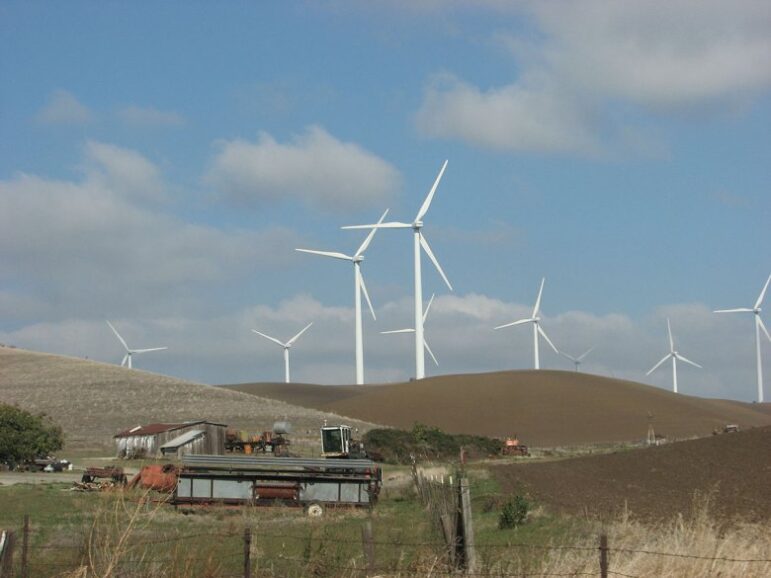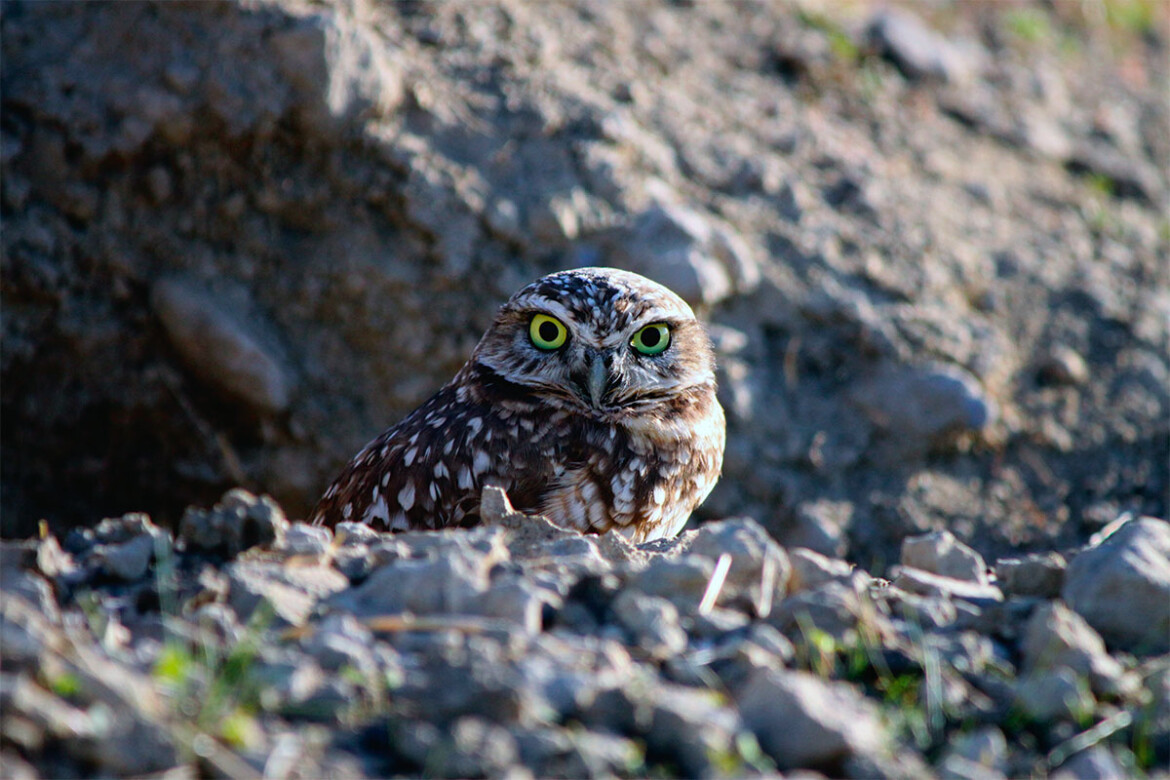Environmental advocates are urging the California Fish and Game Commission to protect the ‘imperiled’ populations of the western burrowing owl under the state’s Endangered Species Act.
Under a petition sent to the FGC, conservation groups sought endangered status for burrowing owls in southwestern California, central-western California and the San Francisco Bay Area, and threatened status for burrowing owls in the Central Valley and southern desert range.
“These fascinating ground-dwelling owls need relief from being bulldozed or evicted to make way for urban sprawl,” said Jeff Miller, a senior conservation advocate at the Center for Biological Diversity. “I’ve witnessed the disappearance of burrowing owls from much of California over the past two decades, and it pains me to watch their extinction trajectory. They need immediate protections if we want to keep these owls around to grace our grasslands and open spaces.”

The burrowing owl — the only owl species that nests and roosts underground — was widespread before in California and commonly nested in grasslands but they have suffered significant habitat loss due to urban development, conversion of grasslands to agricultural lands, and large-scale wind and solar energy infrastructure. They get also killed by rodenticides and collisions with wind turbines and cars, according to the Center for Biological Diversity.
“When a formerly common species disappears from our landscape, what does it say about the health of our ecosystems? Abundant burrowing owls once brought so much joy to residents of our valley, but development has pushed them to the brink of extinction,” said Shani Kleinhaus of the Santa Clara Valley Audubon Society.
An eviction moratorium for burrowing owls
Under the California Endangered Species Act, state and local agencies would be mandated to address threats including the end the state policy that allows owls to be evicted from lands slated for development and requiring adequate mitigation for habitat loss, conservation groups said.
To prevent the total disappearance of burrowing owls from California, advocates emphasize the need for state planning efforts and direct intervention to boost the population of the species.
“State protections are urgently needed since the environmental review process hasn’t meaningfully protected or conserved burrowing owls,” said Catherine Portman with the Burrowing Owl Preservation Society. “We’ve tried to get mitigation for owl habitat destroyed by scores of development projects in Yolo County, but owl colonies are routinely evicted without requiring habitat protections. For example, 103 acres of prime burrowing owl breeding habitat in Yolo County were developed in 2015 in exchange for only 19.5 acres at a mitigation bank that has never hosted nesting owls.”
According to conservation groups, the current state policy allows burrowing owls to be “passively excluded from breeding sites during the non-breeding season to accommodate urban development. They stressed that many evicted owls do not survive and rarely do they successfully breed elsewhere.
“In mere decades, California has seen the decimation of formerly thriving populations of burrowing owls, once one of the more common birds in California,” said Scott Artis with Urban Bird Foundation. “These unique underground owls, with a life history fine-tuned over millions of years, are now in a fight for survival and need increased state protections without delay.”
Renewable energy creates new hazards
Large solar and wind projects are also killing and displacing lots of burrowing owls in California each year, advocates said.

“Increased renewable energy development to mitigate climate change impacts should not exacerbate the biodiversity crisis or come at the expense of thriving burrowing owl populations,” said Pamela Flick, California program director with Defenders of Wildlife. “Unfortunately, the existing policy framework has not proven adequate to protect these charismatic owls, so legal protections under the California Endangered Species Act are now urgently needed.”
According to environmental groups, burrowing owls are nearing “localized extinction” in the Bay Area, where fewer than 25 breeding pairs remain. About 225 breeding pairs are estimated in central-western and southwestern California, and fewer than 1,500 breeding pairs in the southern Central Valley.
